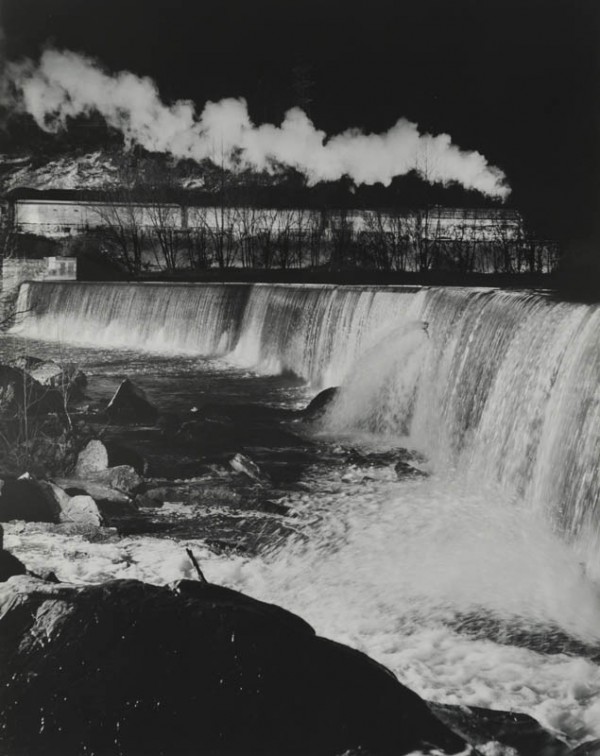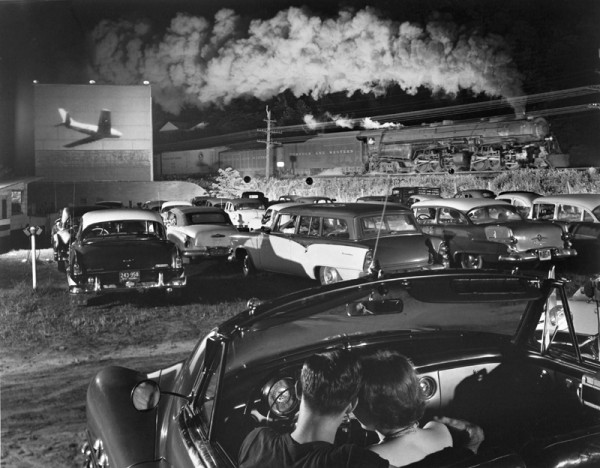
Railroad photographs roll into Akron Art Museum
Good morning America, how are ya? If that railroad allusion rings a bell, then go to the Akron Art Museum, a Knight Arts grantee, and take in one of its stellar and current exhibits. This one features works drawn from the Akron Art Museum’s extensive photography collection and several loaned works and is called “Along the Tracks: O. Winston Link.” It celebrates the museum’s early and continued commitment to Link’s deliberately conceived and gloriously appointed photography.
According to Arnie Tunstall, curator of the exhibit, AAM first displayed (and pretty much presented to the art world) Link’s work approximately 30 years ago. The current exhibit represents an updating – and the building collection that the museum has amassed – so that on this occasion Link can have an overdue one-man show in this venue. That’s pretty cool.
But that’s not all. The exhibit has been installed for several weeks, but there are new stations along the old iron way that call for an art update to the community.
Upcoming on two successive weekends – September 6-7 and 13-14 – the Cuyahoga Valley Scenic Railroad will be bringing a steam locomotive to the area, first to the Cleveland area and on the second weekend to the Akron area. Click here for more information.
On Thursday, October 23, at 6:30 p.m., Thomas Garver, an expert on Link and at one time his assistant, will give an art talk at the museum. As Tunstall said, Garver’s remembrances are as close as you can get to understanding how Link worked and what he was trying to achieve. Garver is the organizer of the O. Winston Link Museum in Roanoke, Va. It opened in 2004.
Steam driven locomotives were what drove photographer O. Winston Link on a near obsessive, productive, and ultimately worthwhile venture to memorialize the coming demise of an important component of American history.
Begun in 1955, as Tunstall noted, Link’s project pictorially examined steam engines, the towns trains passed through, railroad workers and people who lived along the tracks, knowing full well that the end was almost at hand for this mode of transportation, commerce and source of livelihood for those who lived along the trains’ routes. It was, Tunstall said, a personal matter for Link. Though he had the full cooperation of the railway and its workers, he personally funded the project through his commercial photography business in New York.
Link was well aware of – and taken with – steam engines. As Tunstall recalled, Link used to photograph them in the Brooklyn train yards as a boy in his home state of New York. When he realized that the days were numbered for steam engines (they disappeared in favor of diesel engines in 1961), he set out to capture what was left of an era, photographing almost ceaselessly during the period 1955-1961.
To create this body of work, Link traveled along thousands of miles of track, invented photographic techniques (particularly lighting effects, because he often filmed at night and caught trains that sometimes moved at 60mph), and perfected a style that resulted in over 2,500 negatives of life “Along the Tracks.”
Link’s images are not just historically interesting; they represent an imaginative telling of a way of life that is gone. Nowhere is that more fully realized than in what Tunstall said is probably his most famous – and familiar – photograph, “Hot Shot Eastbound.” The title refers to the train, while the image depicts a drive-in movie theater in Iaeger, W.Va. Old cars are assembled in front of the large screen showing a movie about the Korean Conflict with an image of an airplane on the screen. Passing by is the steam driven train. In one image he shows the coming of flight and automobile travel replacing rail travel.
O. Winston Link, “Hot Shot Eastbound.” Photo courtesy of Akron Art Museum
One can imagine a century before a steam train passing by horses and buggies, stage coaches, and wagon trains when the railroad was replacing earlier forms of travel.
There’s another image, “Living Room on the Tracks” taken in Lithia, Va., that shows a woman, her son, a dog, and two cats at home. As the train passes by, the little boy stands at the window and waves to the conductor (who is really close to the house), while the woman and the pets seem totally unaware of the noise and the train’s presence.
Tunstall noted that the owner of the house had the living room window expanded so that the family could get a bigger view of it as it passed. For many people, the train represented the way they received mail from family and friends, packages from faraway merchandise stores, news, and foodstuff from distant markets. In short, the trains were important to the way they lived. Link captured that atmosphere in all his photographs.
“Along the Tracks: O. Winston Link” will be on display 11 a.m.-5 p.m. Wednesday-Sunday and 11 a.m.-9 p.m. on Thursday through November 9 at Akron Art Museum, One South High St., Akron; 330-376-9185; www.akronartmuseum.org. General admission is $7 (free on Thursdays).
Recent Content
-
Artsarticle ·
-
Artsarticle ·
-
Artsarticle ·

